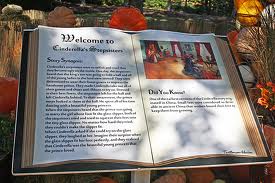 Steve Sipress
Head Rhino & Chief Strategist
Steve Sipress
Head Rhino & Chief Strategist
Felicia Slattery: Public Speaking and the Art of Story-Telling- 5 Tips to Incorporate Stories Into Your Speeches

The weather was crisp in the late afternoon hours as we headed for the choir of the bells Christmas Eve service at the beautiful small-town church in east Tennessee. As my mother-in-law guided us to a place in the crowded pews, warmly greeting friends along the way, the late afternoon sun was streaming in through the circular stained-glass windows. Children looked wide-eyed around the large building in anticipation of the joy to come over the next day.
As the service progressed, we reached the point where the pastor would deliver his message to the hundreds of church members and their visiting guests, friends, and family members from near and far. The pastor was eloquent and down-to-earth all at the same time. He kept the congregation spell-bound by telling a story of a little orphan boy who one day learned about the Christmas story and felt like he finally belonged to a family.
Later the next day, during Christmas dinner, I sat, trying to guide the conversation my daughters had begun away from the impending try-outs for their school musical, which they had talked about incessantly for days. I asked a simple question: “What’s your favorite Christmas memory from Christmases past?” And in turn everyone had the chance to answer. I learned how my in-laws became engaged, re-live the memory of getting my beloved stuffed animal, Leo the Lion when I was 7 years old, and hear how my 9-year old daughter’s best Christmas memory was getting a baby sister 7 years ago this year.
The common denominator? Both experiences: at church and around the family dinner table were enriched for everyone present by stories.
When you want to impact any audience, no matter the size or occasion, whether it’s for your business or in your family, to sell something or to teach something, telling stories is an invaluable tool. Here are the top elements to any great story you can tell:
Stories enhance any communication situation. Remembering facts and statistics isn’t as easy for most people as it is to remember the details of a well-told story. Include them everywhere, as often as possible.
The story should illustrate a point. You never want to leave your audience wondering what that was all about. Make a clear connection between your story and the reason for telling it.
Emotions are important. Use language that evokes emotion. Even if you never say the word “feeling,” you can use adjectives, adverbs, and settings to set the emotional scene of any story.
Adding little details enhances the story, but don’t sweat the exactness of it all. Maybe I got Leo the Lion when I was 8 years old or the church was in North Carolina instead of Tennessee. As long as the essence of the story remains, don’t stop yourself 15 times as you tell it trying to recall if your story happened on a Monday or a Tuesday. No one is giving a history test after your story.
Pay attention to your nonverbal expression of the story. Speed up when you’ve reached an exciting point, slow down and lower your volume to invoke intensity, and use gestures to enhance your audience’s overall meanings.
Of course an easy way to tell stories in your business is to speak on stage or use video on your websites and on video sharing sites like YouTube. In my Celebration of Life you can get a deal on using both successfully. And I promise you never have to use “once upon a time” or “and they lived happily ever after.” Unless you want to!
I’d love to hear from you. How do you work stories into your speaking? Or do you have ideas of how you can going forward? Please share in the comments!

Recent Comments